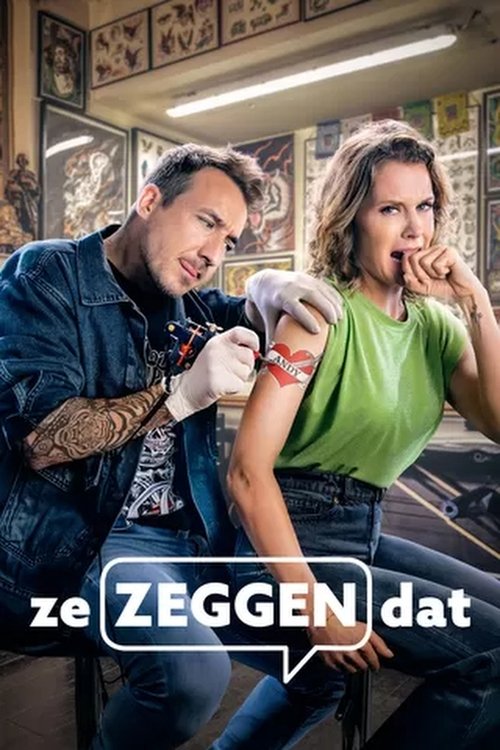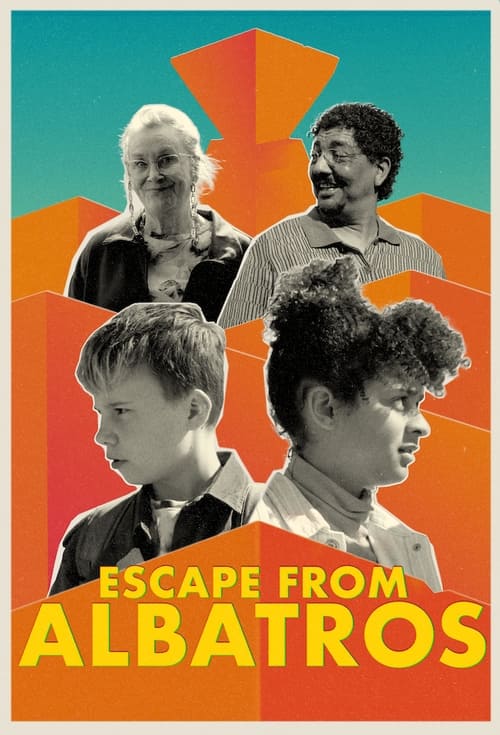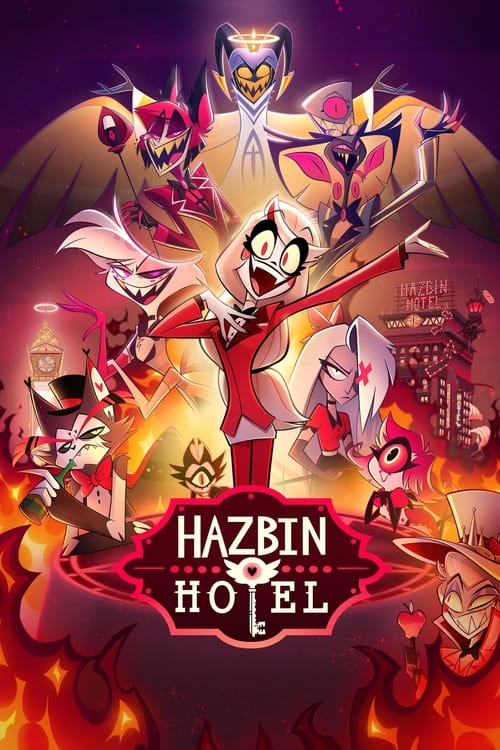
Ask Your Own Question
What is the plot?
In the opening scene of "Episode 101," we are introduced to Lisa, a young woman in her mid-twenties, who is seen in her small, cluttered apartment. The camera pans over her workspace, filled with art supplies and unfinished projects, hinting at her aspirations as an artist. Lisa is struggling with self-doubt and feels the pressure of societal expectations. She receives a text from her best friend, Mia, inviting her to a party that evening, but Lisa hesitates, feeling unmotivated and anxious about social interactions.
Later that day, Lisa decides to attend the party, hoping to break out of her shell. As she arrives, the atmosphere is lively, with music playing and people mingling. Lisa feels out of place, standing awkwardly at the edge of the room. Mia, noticing her discomfort, encourages her to join in and introduces her to a group of friends. Lisa attempts to engage in conversation but struggles to connect, feeling increasingly isolated.
During the party, Lisa meets Jake, a charismatic and confident artist who captivates her attention. They share a brief conversation about their artistic passions, and Lisa feels a spark of inspiration. However, as the night progresses, Lisa witnesses Jake flirting with another woman, which leaves her feeling rejected and disheartened. She decides to leave the party early, feeling defeated and questioning her worth.
The next day, Lisa reflects on her experience and decides to channel her emotions into her art. She spends hours painting, pouring her feelings onto the canvas. This creative outlet serves as a catharsis for her, and she begins to feel a sense of empowerment. However, her self-doubt resurfaces when she receives a message from Mia, who suggests they collaborate on a project together. Lisa is torn between wanting to work with her friend and fearing that she will disappoint her.
Later, Lisa visits a local art gallery where she sees a call for submissions for an upcoming exhibition. Inspired, she decides to submit her work, hoping to gain recognition and validation. As she prepares her submission, she faces numerous obstacles, including her own insecurities and the pressure to meet the gallery's standards. Despite these challenges, Lisa pushes through, driven by her desire to prove herself.
In a pivotal moment, Lisa attends a workshop at the gallery, where she meets other aspiring artists. Here, she finds a supportive community that encourages her to embrace her unique style. This experience reignites her passion for art and helps her build confidence. Lisa begins to form friendships with other artists, including a mentor figure who offers guidance and constructive feedback.
As the submission deadline approaches, Lisa works tirelessly on her piece, pouring her heart and soul into it. However, she faces a setback when she accidentally spills paint on her canvas, leading to a moment of panic. Instead of giving up, Lisa decides to incorporate the mistake into her artwork, transforming it into something new and beautiful. This decision symbolizes her growth and acceptance of imperfection.
The episode culminates with Lisa submitting her artwork to the gallery, feeling a mix of excitement and anxiety. She shares the moment with Mia, who expresses her pride in Lisa's progress. The episode ends on a hopeful note, with Lisa looking forward to the future and embracing her identity as an artist, ready to face whatever challenges may come her way.
What is the ending?
In the ending of "Lisa," Season 1, Episode 101, Lisa confronts her fears and insecurities, leading to a pivotal moment of self-acceptance. The episode concludes with her taking a bold step towards her dreams, while her relationships with her friends and family evolve, showcasing growth and understanding.
As the episode unfolds towards its conclusion, the scene transitions to a dimly lit café where Lisa sits alone, her fingers nervously tapping on the table. The atmosphere is thick with tension as she reflects on the challenges she has faced throughout the episode. Her internal struggle is palpable; she grapples with feelings of inadequacy and the weight of expectations from those around her.
Suddenly, her best friend, Mia, bursts through the door, her face flushed with excitement. Mia has just received news about an opportunity that could change both their lives--a chance to showcase their talents at a local art exhibition. Lisa's heart races at the thought, but doubt creeps in. She hesitates, recalling past failures and the fear of judgment.
Mia, sensing Lisa's hesitation, sits down and encourages her, sharing her own fears and how she overcame them. The warmth of their friendship fills the room, and Lisa's expression begins to shift from uncertainty to determination. The camera captures the flicker of hope in her eyes as she realizes that she is not alone in her struggles.
The scene transitions to a montage of Lisa preparing for the exhibition. She is seen sketching fervently, her passion igniting as she pours her emotions onto the canvas. The vibrant colors reflect her evolving mindset, symbolizing her journey towards self-acceptance. Each brushstroke is a testament to her resilience, and the audience can feel her growing confidence.
As the day of the exhibition arrives, the atmosphere is electric. The gallery is filled with people, and Lisa stands nervously by her artwork, her heart pounding in her chest. She glances around, spotting familiar faces--her family, Mia, and even some of her former critics. The moment is overwhelming, yet she stands tall, embodying the strength she has cultivated throughout the episode.
When the exhibition officially opens, Lisa takes a deep breath and steps forward, ready to share her story through her art. The crowd begins to gather, and she finds herself engaging with viewers, explaining the inspiration behind her pieces. The initial fear that gripped her begins to dissipate as she connects with others, her passion shining through.
In the final moments of the episode, Lisa receives heartfelt compliments and encouragement from those around her. The camera zooms in on her face, capturing a mixture of relief and joy. She realizes that she has not only showcased her art but has also embraced her true self. The episode closes with a shot of Lisa smiling, surrounded by friends and family, a sense of belonging enveloping her.
As the credits roll, viewers are left with a sense of hope and inspiration, witnessing Lisa's transformation from self-doubt to self-acceptance, and the importance of supportive relationships in overcoming personal challenges. Each character, from Mia to Lisa's family, plays a crucial role in her journey, highlighting the theme of friendship and the power of believing in oneself.
Is there a post-credit scene?
In "Episode 101" of the show "Lisa," there is indeed a post-credit scene that adds an intriguing layer to the episode's narrative.
As the credits roll, the screen fades to black before transitioning to a dimly lit café, where Lisa is seen sitting alone at a corner table. The atmosphere is cozy yet slightly melancholic, with soft jazz music playing in the background. Lisa stirs her coffee absentmindedly, her expression a mix of contemplation and uncertainty.
Suddenly, the door chimes as a figure enters. It's a familiar face from her past, someone she had a complicated relationship with. The tension in the air is palpable as they lock eyes. Lisa's heart races, and her internal conflict is evident; she grapples with feelings of nostalgia and unresolved issues.
The figure approaches her table, and there's a moment of silence where both seem to weigh the significance of this unexpected encounter. Lisa's expression shifts from surprise to a guarded curiosity. The scene ends with the figure leaning in slightly, whispering something that is inaudible to the audience, leaving viewers on the edge of their seats, eager to know what will unfold in the next episode.
This post-credit scene effectively sets the stage for future developments in Lisa's journey, hinting at deeper emotional layers and unresolved conflicts that will be explored as the series progresses.
What motivates Lisa to pursue her dreams despite the challenges she faces?
Lisa is driven by a deep desire to prove herself and escape the confines of her small-town life. Her passion for art and the need for self-expression fuel her determination, even when faced with skepticism from those around her.
How does Lisa's relationship with her family influence her decisions throughout the episode?
Lisa's relationship with her family is strained, particularly with her parents who have traditional expectations for her future. Their disapproval weighs heavily on her, creating internal conflict as she grapples with the desire for their acceptance versus her own aspirations.
What pivotal moment leads Lisa to make a significant choice about her future?
A pivotal moment occurs when Lisa receives an unexpected opportunity to showcase her artwork at a local gallery. This moment serves as a catalyst for her to confront her fears and take a leap of faith towards her dreams, despite the potential fallout with her family.
How does Lisa's friendship with her best friend impact her journey in this episode?
Lisa's friendship with her best friend provides a source of support and encouragement. Her friend acts as a sounding board for Lisa's ideas and fears, helping her to navigate the emotional turmoil of pursuing her passion while also reminding her of the importance of staying true to herself.
What challenges does Lisa face in her artistic endeavors, and how does she respond to them?
Lisa faces numerous challenges, including self-doubt, criticism from peers, and the pressure to conform to societal expectations. She responds to these challenges with resilience, using them as motivation to refine her craft and assert her identity as an artist.
Is this family friendly?
In "Lisa," season 1, episode 101, there are several elements that may be considered potentially objectionable or upsetting for children or sensitive viewers.
-
Emotional Turmoil: The episode explores themes of loss and grief, which may be intense for younger audiences. Characters experience deep emotional struggles that could resonate with viewers who have faced similar situations.
-
Conflict and Tension: There are scenes of interpersonal conflict that may include raised voices or arguments, which could be distressing for sensitive viewers.
-
Mature Themes: The narrative touches on complex family dynamics and personal challenges that may not be suitable for younger children, as they require a level of maturity to fully understand.
-
Visual Imagery: Some scenes may contain visual elements that evoke sadness or discomfort, such as depictions of loneliness or isolation.
-
Character Vulnerability: Characters display vulnerability and moments of despair, which could be upsetting for viewers who are sensitive to emotional distress.
Overall, while the show may not contain explicit content, the emotional depth and themes presented could be challenging for younger audiences or those who are particularly sensitive.

































